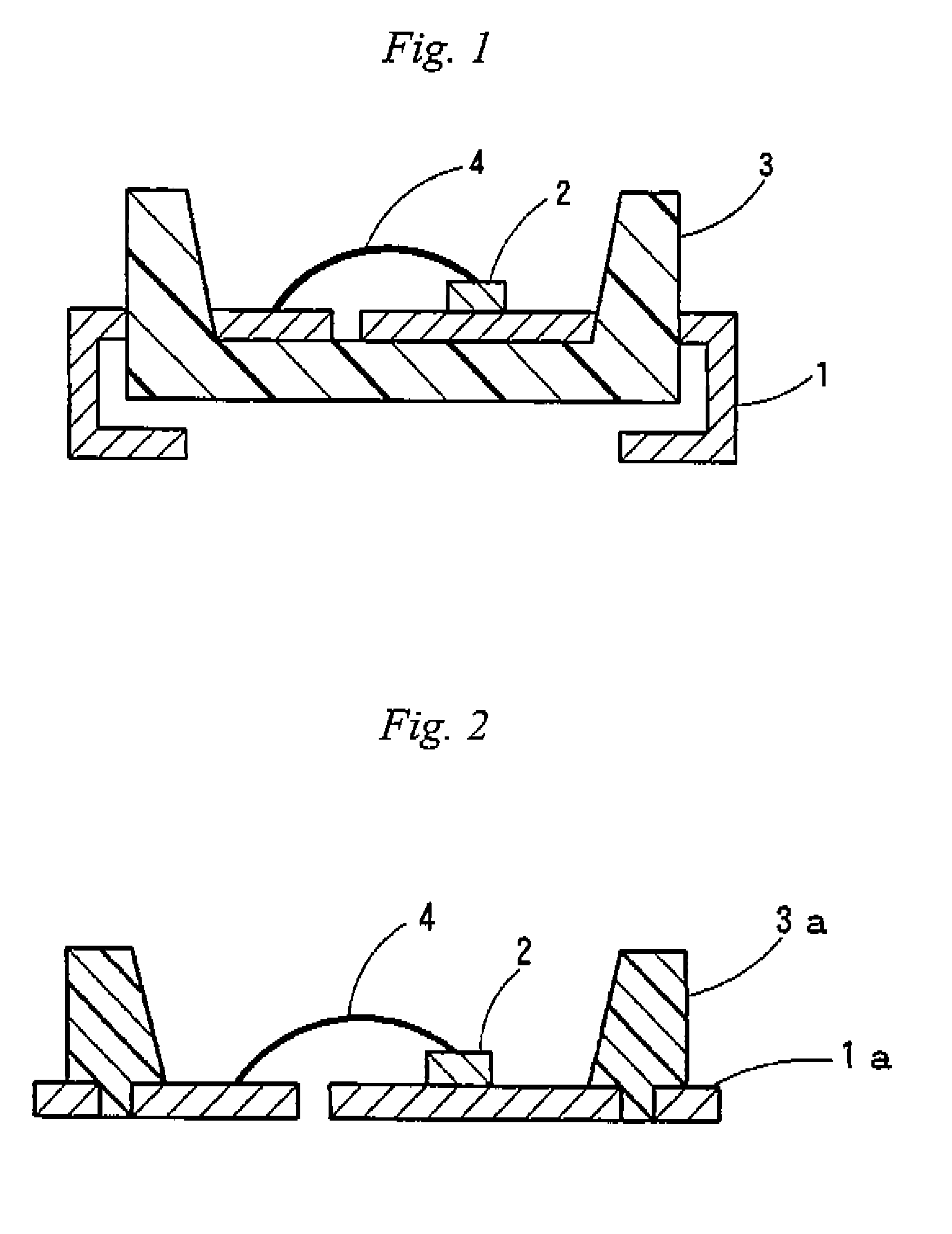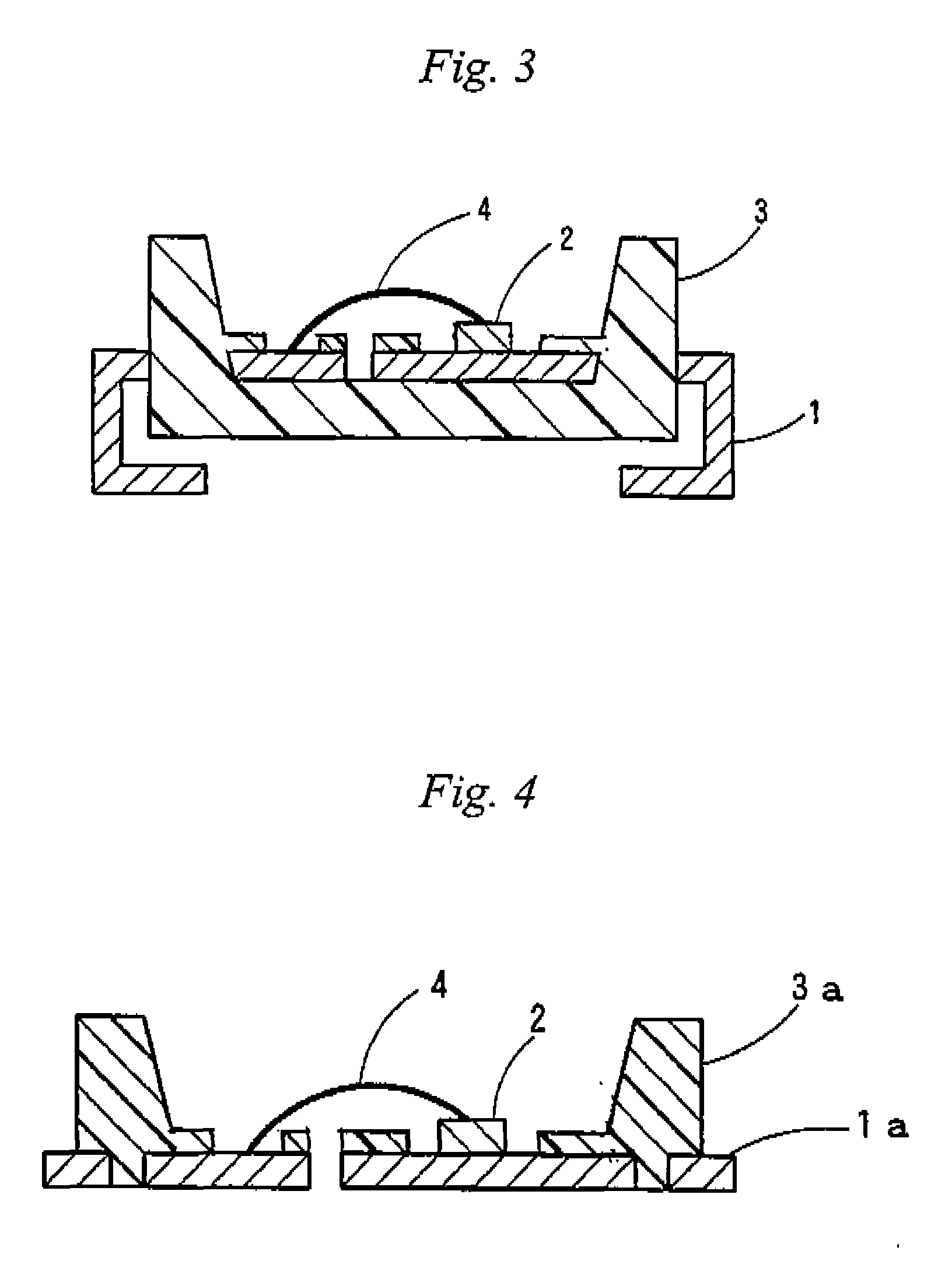Resin composition for optical semiconductor device, optical-semiconductor-device lead frame obtained using the same, and optical semiconductor device
a semiconductor device and semiconductor technology, applied in the direction of thermoelectric devices, optical elements, instruments, etc., can solve the problems of reducing the efficiency of light reflection, and achieve excellent heat resistance of soldering, excellent properties, and high thermal discoloration resistance
- Summary
- Abstract
- Description
- Claims
- Application Information
AI Technical Summary
Benefits of technology
Problems solved by technology
Method used
Image
Examples
examples
[0083]Examples are given below together with Comparative Examples. However, the invention should not be construed as being limited to the following Examples.
[0084]First, prior to the production of resin compositions, the ingredients shown below were prepared.
[0085]Epoxy Resin a1: Triglycidyl isocyanurate (epoxy equivalent: 100)
[0086]Epoxy Resin a2: Bisphenol A diglycidyl ether (epoxy equivalent: 450)
[0087]Acid Anhydride Methylhexahydrophthalic anhydride (acid equivalent: 168)
[0088]Polyorganosiloxane c1
[0089]Into a flask were introduced 206 g (50 mol %) of phenyltrimethoxysilane and 126 g (50 mol %) of dimethyldimethoxysilane. A mixture of 1.2 g of 20% aqueous HCl solution and 40 g of water was added dropwise thereto. After completion of the dropwise addition, refluxing was continued for 1 hour. Subsequently, the resultant solution was cooled to room temperature (25° C.) and then neutralized with sodium hydrogen carbonate. The organosiloxane solution obtained was filtered to remove i...
PUM
| Property | Measurement | Unit |
|---|---|---|
| light reflectivity | aaaaa | aaaaa |
| reflectivity | aaaaa | aaaaa |
| softening point | aaaaa | aaaaa |
Abstract
Description
Claims
Application Information
 Login to View More
Login to View More - R&D
- Intellectual Property
- Life Sciences
- Materials
- Tech Scout
- Unparalleled Data Quality
- Higher Quality Content
- 60% Fewer Hallucinations
Browse by: Latest US Patents, China's latest patents, Technical Efficacy Thesaurus, Application Domain, Technology Topic, Popular Technical Reports.
© 2025 PatSnap. All rights reserved.Legal|Privacy policy|Modern Slavery Act Transparency Statement|Sitemap|About US| Contact US: help@patsnap.com



